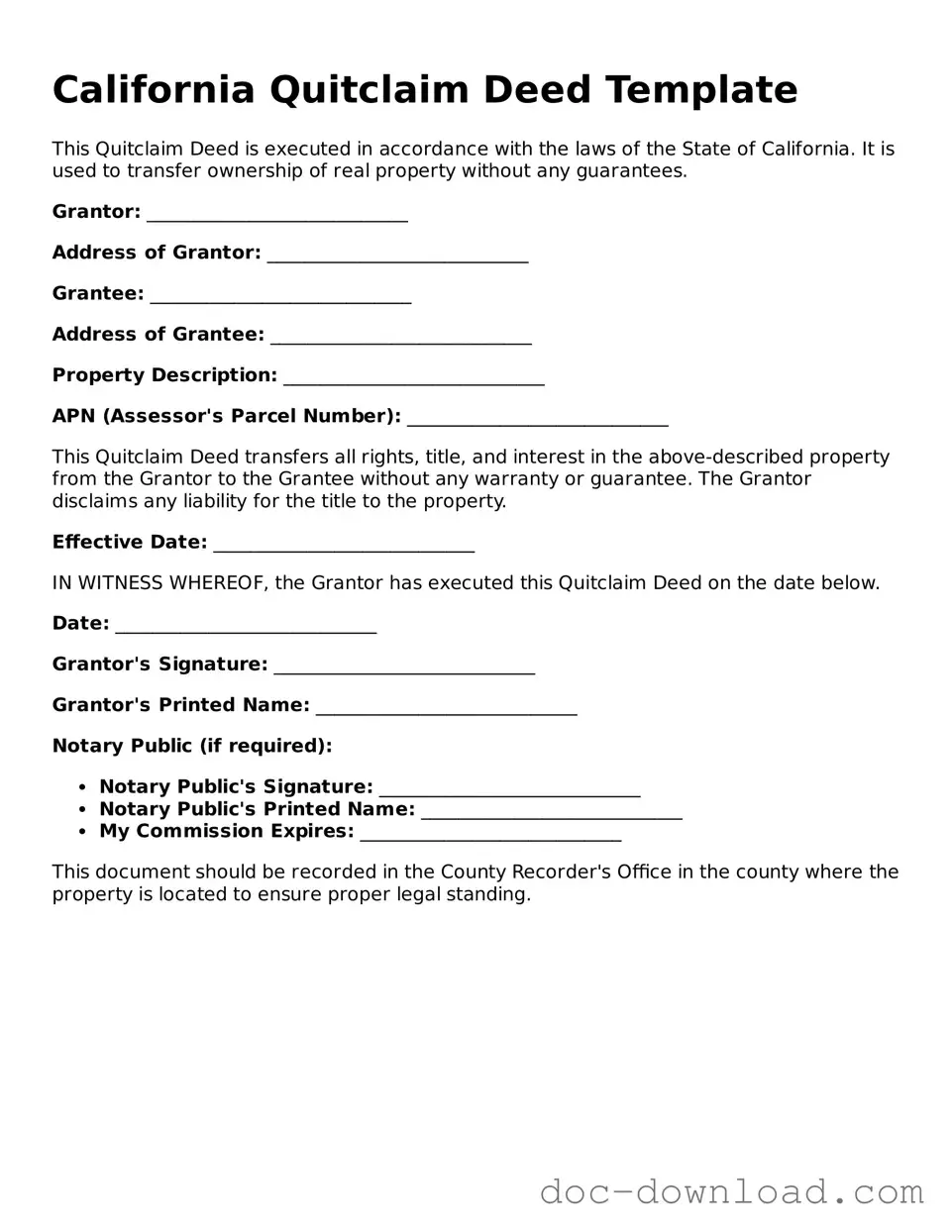California Quitclaim Deed Template
This Quitclaim Deed is executed in accordance with the laws of the State of California. It is used to transfer ownership of real property without any guarantees.
Grantor: ____________________________
Address of Grantor: ____________________________
Grantee: ____________________________
Address of Grantee: ____________________________
Property Description: ____________________________
APN (Assessor's Parcel Number): ____________________________
This Quitclaim Deed transfers all rights, title, and interest in the above-described property from the Grantor to the Grantee without any warranty or guarantee. The Grantor disclaims any liability for the title to the property.
Effective Date: ____________________________
IN WITNESS WHEREOF, the Grantor has executed this Quitclaim Deed on the date below.
Date: ____________________________
Grantor's Signature: ____________________________
Grantor's Printed Name: ____________________________
Notary Public (if required):
- Notary Public's Signature: ____________________________
- Notary Public's Printed Name: ____________________________
- My Commission Expires: ____________________________
This document should be recorded in the County Recorder's Office in the county where the property is located to ensure proper legal standing.
